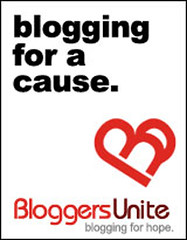Steven Mallas with the Motley Fool called it right. Les Moonves, president and chief executive officer of CBS Corporation, sees CBS as a content king.
However, Nina Tassler, president of CBS Entertainment, recently said, because of social media (Jericho specifically), “…So I think we are looking at a shift and a change." And with the EyeLab concept, which will give consumers the ability to create short-film clips by editing content from CBS shows, some insiders are calling CBS a “next-generation studio.”
So which is it? Consumers are asking. Some are speculating.
“I do not think CBS even has people in place to evaluate and determine whether or not an opportunity is good for them,” commented Jericho fan blogger Terocious in response to our Tuesday post. “I think the company's success with new media must be coming from a small minority within the company who sees the possibilities and is pushing for them.”
Small minorities who see possibilities and push for them.
I agree. This seems to be happening inside CBS. But will that work?
Let’s imagine Moonves as an archer. He wants to hit the bulls-EyeLab for viewers, critics, shareholders, and, well, lots of different publics. If he does, then he is an expert. The ratings come in. Fans love the company. The stock soars. Everybody makes money, a portion of which is invested to make even better content.
Of course, it’s not that easy. There are a great number of variables, just like archery. Maybe the archer needs glasses. Maybe the environment is bit windy and could blow some arrows off course. Maybe the best arrows are too expensive so some of his arrows are slightly inferior compared to others.
Add to all these challenges: arrows that have minds of their own. Right. Unlike real arrows, each CBS arrow represents a small minority of people within the company who want to fly in a slightly different direction because they see a better target or want to adjust for the wind or whatever the case may be. Well, your chances of hitting the mark are suddenly pretty thin.
Successful communication requires one archer with great vision and unwavering arrows.
Companies that win have a quiver full of arrows that will always fly in the same direction. They will likely hit the mark, every time. Or, maybe they have an archer who is intuitive enough to listen to what the arrows are telling him or her and adjust. Either way, it works.
Some people like to tell me this is impossible, especially with big companies like CBS. They tell me that building internal consensus within a big corporation is an impossible task and maybe a waste of time. But that’s not exactly true. We do it all the time.
Teaching archers and arrows to work together and hit the mark.
A couple years ago, I was hired by a major utility to help create a graphic standards manual so its identity would always have some semblance of consistency (eg. no pink logos). The challenge, I was told, was that everybody — some 40 stakeholders within the company — all had different ideas about the company’s identity. (In other words, lots and lots of thinking arrows.)
What I really wanted to do was to use our core message process because one of the benefits is consensus building. But the utility wasn’t really interested because, they said, the geographical distance between several divisions was too far. So, even though we could not use a core message process, I applied a similar method that did not require all 40 stakeholders to be present at once.
I surveyed the arrows, um, stakeholders by e-mail; and then I followed up with interviewers. By the end of my research, I came across a surprising conclusion and laughed out loud.
All 40 stakeholders believed they were the only ones who understood the identity of the company. However, all 40 stakeholders had the same view. They just didn’t know it!
While that doesn’t always happen, it put us in the position to develop graphics standard manual that the arrows felt pretty good about. They liked the diection. Even better, the archer (the communication director in this case) felt very confident in being able to hit the mark every time, no matter who held the bow. They did.
The best external communication works from the inside out.
In sum, all this means is that for companies to succeed with communicaiton, the archer and all the arrows have to agree on the mark and the direction they must travel to hit that mark.
Or, in other words, if they can agree internally, then it’s easier to move a consistent message out into the mainstream. Unfortunately, especially with the advent of social media, more and more companies are sharing their internal opposing viewpoints with the outside world.
The result is mixed messages that leave consumers confused, frustrated, or worse, disenfranchised because nobody believes what the company is saying half of the time. From what consumers are telling me, that is what is happening at CBS, most major networks, and too many companies on or off the net.

However, Nina Tassler, president of CBS Entertainment, recently said, because of social media (Jericho specifically), “…So I think we are looking at a shift and a change." And with the EyeLab concept, which will give consumers the ability to create short-film clips by editing content from CBS shows, some insiders are calling CBS a “next-generation studio.”
So which is it? Consumers are asking. Some are speculating.
“I do not think CBS even has people in place to evaluate and determine whether or not an opportunity is good for them,” commented Jericho fan blogger Terocious in response to our Tuesday post. “I think the company's success with new media must be coming from a small minority within the company who sees the possibilities and is pushing for them.”
Small minorities who see possibilities and push for them.
I agree. This seems to be happening inside CBS. But will that work?
Let’s imagine Moonves as an archer. He wants to hit the bulls-EyeLab for viewers, critics, shareholders, and, well, lots of different publics. If he does, then he is an expert. The ratings come in. Fans love the company. The stock soars. Everybody makes money, a portion of which is invested to make even better content.
Of course, it’s not that easy. There are a great number of variables, just like archery. Maybe the archer needs glasses. Maybe the environment is bit windy and could blow some arrows off course. Maybe the best arrows are too expensive so some of his arrows are slightly inferior compared to others.
Add to all these challenges: arrows that have minds of their own. Right. Unlike real arrows, each CBS arrow represents a small minority of people within the company who want to fly in a slightly different direction because they see a better target or want to adjust for the wind or whatever the case may be. Well, your chances of hitting the mark are suddenly pretty thin.
Successful communication requires one archer with great vision and unwavering arrows.
Companies that win have a quiver full of arrows that will always fly in the same direction. They will likely hit the mark, every time. Or, maybe they have an archer who is intuitive enough to listen to what the arrows are telling him or her and adjust. Either way, it works.
Some people like to tell me this is impossible, especially with big companies like CBS. They tell me that building internal consensus within a big corporation is an impossible task and maybe a waste of time. But that’s not exactly true. We do it all the time.
Teaching archers and arrows to work together and hit the mark.
A couple years ago, I was hired by a major utility to help create a graphic standards manual so its identity would always have some semblance of consistency (eg. no pink logos). The challenge, I was told, was that everybody — some 40 stakeholders within the company — all had different ideas about the company’s identity. (In other words, lots and lots of thinking arrows.)
What I really wanted to do was to use our core message process because one of the benefits is consensus building. But the utility wasn’t really interested because, they said, the geographical distance between several divisions was too far. So, even though we could not use a core message process, I applied a similar method that did not require all 40 stakeholders to be present at once.
I surveyed the arrows, um, stakeholders by e-mail; and then I followed up with interviewers. By the end of my research, I came across a surprising conclusion and laughed out loud.
All 40 stakeholders believed they were the only ones who understood the identity of the company. However, all 40 stakeholders had the same view. They just didn’t know it!
While that doesn’t always happen, it put us in the position to develop graphics standard manual that the arrows felt pretty good about. They liked the diection. Even better, the archer (the communication director in this case) felt very confident in being able to hit the mark every time, no matter who held the bow. They did.
The best external communication works from the inside out.
In sum, all this means is that for companies to succeed with communicaiton, the archer and all the arrows have to agree on the mark and the direction they must travel to hit that mark.
Or, in other words, if they can agree internally, then it’s easier to move a consistent message out into the mainstream. Unfortunately, especially with the advent of social media, more and more companies are sharing their internal opposing viewpoints with the outside world.
The result is mixed messages that leave consumers confused, frustrated, or worse, disenfranchised because nobody believes what the company is saying half of the time. From what consumers are telling me, that is what is happening at CBS, most major networks, and too many companies on or off the net.




















